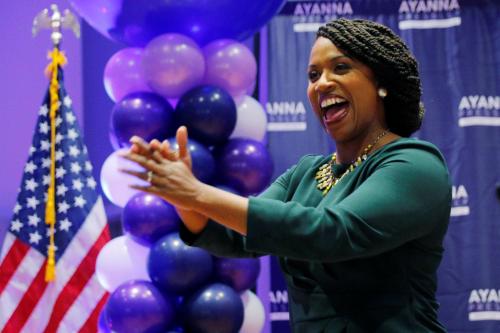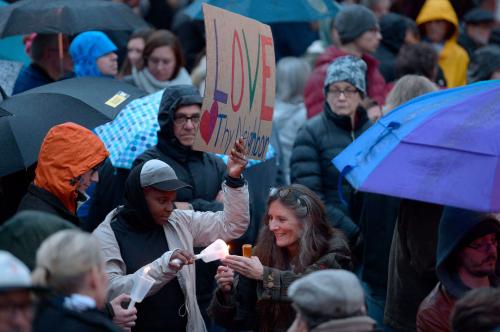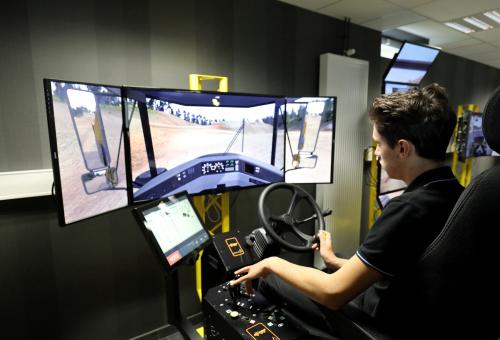This piece originally appeared in The Hechinger Report.
The stakes are high in the upcoming midterm elections, but few races have commanded as much attention as the Texas senatorial battle between Republican incumbent Ted Cruz and Democratic U.S. Representative Beto O’Rourke of El Paso. O’Rourke’s commitment to stricter gun laws, universal healthcare, and debt-free college has mobilized young people across the state and the country.
Last week, in the run-up to this heated battle, five students from Prairie View A&M University, an HBCU (historically black colleges and universities) outside of Houston, filed a lawsuit in federal court against Waller County, where the university is located. It alleged that the county violated students’ voting rights by not providing early voting stations on campus and in the city of Prairie View in the first week of Texas’ early voting period—though stations were available in other parts of the mostly rural county. Just two days after the suit was filed, the county opened a polling place at Prairie View City Hall, and expanded voting hours at the university’s campus center.
Voter suppression and intimidation has been a time-honored tactic in America, and in the run-up to the midterms next week, complaints have been reported from Georgia to Texas.
Clearly, the party in power can only maintain it by curtailing the rights of the underrepresented: specifically in this election cycle, millennials, blacks and Latinx.
The participation of younger voters will determine the outcomes of the upcoming election. Thirty-four million millennials voted in the 2016 election, constituting 25 percent of votes cast. The 48.1 million baby boomers may have outnumbered millennials two years ago, but those numbers are shifting. While the ranks of the boomers thin out each year, an estimated 8 million more Americans are eligible to vote this year than in 2016. Many of these young voters enter the political arena with a particular agenda, and one of their key obsessions is gun control. Young people laid down the gauntlet earlier this year when student survivors of the February 14 Parkland school shooting made clear that young people want more than the customary “thoughts and prayers” in response.
Thousands took to the streets this past April as part of the National School Walkout, which was organized as a statement against gun violence. And in response to a tweet by the president, Marjory Stoneman Douglas student Sarah Chadwick wrote, “Multiple of my fellow classmates are dead. Do something instead of sending prayers. Prayers won’t fix this. But Gun control will prevent it from happening again.”
A recent survey by the polling company Socialsphere of 14- to 29-year-olds revealed that top priorities among these voters are gun control, access to higher education, and healthcare reform—all issues that stick in the craw of Republicans. Washington Post columnist Catherine Rampell asked, “Why do so many Republicans hate college” in her 2017 column, citing attacks on faculty hiring and budget cuts under GOP legislatures and rhetorical attacks Republicans have made against the value of state flagships. Indeed, according to a 2017 Pew Research Center survey, “58% of Republicans and Republican-leaning independents say colleges and universities have a negative effect on the way things are going in the country, while just 36% say their effect is positive.” This is compared to 19 percent of Democrats who say they have a negative view and 72 percent who have positive views of higher education.
Additionally, the GOP-led repeal of the Affordable Care Act, which failed due to growing support for the law’s provisions, has forced Republicans to say they actually support the act after they’ve done so much to gut the bill. “As a candidate, I promised that we would protect coverage for patients with pre-existing conditions and create new health care insurance options that would lower premiums,” President Trump wrote in a USA Today op-ed. As for gun control, Sarah Chadwick said it all.
Clearly, an uptick in first-time voter turnout, galvanized by calls for reform from candidates, could turn the tide in a number of key races this November.
At 59 percent of the population, Generation X, millennials and the post-millennial generation make up a clear majority of voters in the United States
A team out of Tufts University in Massachusetts has created the Youth Electoral Significance Index, which highlights dozens of races across the country where younger voters “can have a decisive impact on the outcome of a race.” In the index you can see that young people are a critical voting bloc in the races for governor and senator for Minnesota. In California, young voters will likely determine whether Republicans or Democrats get control of eight House seats, four of which lie in rapidly diversifying and younger skewing Orange County.
Six of ten millennials supported the Democratic Party on the presidential ticket in 2016, and the millions of newly eligible young voters are even more liberal on average, according to The Atlantic’s reporting of Republican and Democratic pollsters. Perhaps it’s no surprise, then, that several recent Republican-led voting reforms have been aimed at suppressing the youth vote. Since the Republican wave of the 2010 midterms, a startling 24 states have implemented some kind of voting restriction. With the exception of three states, all were passed by Republican-controlled legislatures.
In 2016, students in purple states such as North Carolina and Wisconsin cast hundreds of provisional ballots or were turned away altogether after showing out-of-state IDs that didn’t meet new identification laws. The situation in North Carolina was so ridiculous that the nonpartisan, voter participation advocacy group Democracy North Carolina had to fight to get 29,000 provisional ballots counted in the last presidential primary. In Wisconsin, ThinkProgress found that as many as 300,000 people statewide may not have possessed the proper identification required to vote, another potential game-changer in a state Donald Trump carried by only 30,000 votes.
In Texas, which removed more than 400 polling places between 2013 and 2016, students were made to wait for hours in long lines in order to cast their ballot. Scarce and inconveniently located polling stations disproportionately affect young and black voters, who may also have trouble getting to the polls due to lower rates of car ownership. One student in Baltimore County was even told that she “could lose financial aid and scholarships and face fines” if she didn’t vote in her home county. (People of voting age can vote wherever they declare their residency—in their college or home town—and financial aid isn’t contingent upon where you vote.)
Even absentee ballots aren’t a proper solution: Delaware, for instance, makes absentee voters get their request forms notarized. And we all know if you really want to suppress action, demand that it be notarized.
A 2017 proposal in Arizona considered students to be only “part-time residents” in their school’s district, and would have prevented them from voting despite near full-time residency. New Hampshire Republicans, after a narrow Senate loss, also pushed for a strict definition of residency that would have enacted significant barriers to college voters. Both bills eventually failed because of the outrage that ensued.
Unfortunately, it’s hard to accurately measure the impact of these laws and whether they produce their desired effect. However, the majority of these initiatives have been pushed through by Republicans, who no doubt recognize the partisan tendencies of young voters.
At 59 percent of the population, Generation X, millennials and the post-millennial generation make up a clear majority of voters in the United States, according to the nonpartisan think tank the Pew Research Center. Much to Republicans’ chagrin, demographics are indeed destiny. But they clearly aren’t going down without a fight. Let’s just hope they don’t manage to take down democracy on the way.
The author would like to thank Alex Thomas for his contributions to this post.







Commentary
Youth will determine the outcome of the 2018 midterm election
Wednesday, October 31, 2018